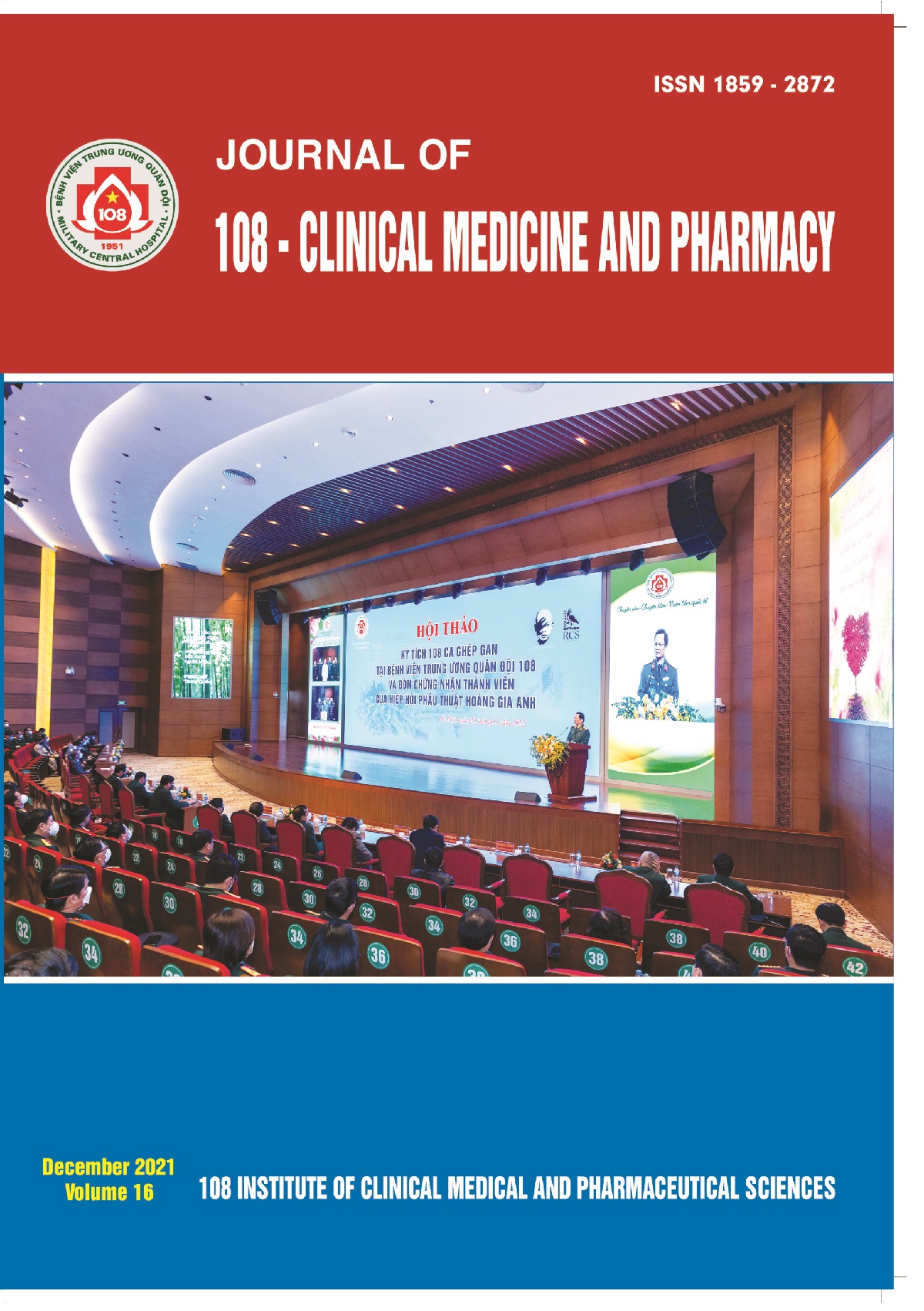Cardiac schockwave therapy in the treatment of ischemic heart disease patiens with refractive angina pectoris
Main Article Content
Keywords
Abstract
Objective: To evaluate of the effectiveness of cardiac shockwave therapy in the treatment of ischemic heart disease with refractive angina pectoris. Subject and method: A prospective, cross-sectional study with comparison and follow-up for 6 months on 50 patients with refractive angina pectoris from January 2017 to January 2020. The protocol application of 100 shocks/spot at 0.09mJ/mm2 energy flux density for 3 - 6 spots each time, with three times per week at each series for three series at 1, 5, 9 weeks. Result: The average age was 71.32 ± 10.5 years, men accounted for 78%. The symptoms of angina improved significantly (amount of chest pain 5.87 ± 2.7 to 0.28 ± 0.45 times; Nitrat consumed per week from 6.3 ± 3.5 to 0.3 ± 0.5 tablets/week). The 6-minute walking test all improved (278.1 ± 71m compared with 390.5 ± 42.3m). CCS angina class improved significant. NYHA grade improved significantly (NYHA III from 40.7% to 11.1%, NYHA II from 51.9% to 33.3%). Pro-BNP decreased (994.99 ± 1708.9 to 429.0 ± 453.9 pg/ml). WSMI decreased from 1.49 ± 0.22 to 1.24 ± 0.12, GLS improved from -9.79 ± 2.68 to -12.7 ± 2.42. Average score of SSS, SRS, SDS markedly improved with p<0.05 by SPECT. The degree of severe perfusion defect and the wide perfusion defect area decreased significantly after treatment by 52% to 12% and 58% to 28%, respectively. Conclusion: Cardiac shockwave therapy improved clinical symptoms and increased myocardial perfusion in ischemic heart disease with refractive angina pectoris.
Article Details
References
2. Alunni G, Barbero U, Vairo A, D'Amico S, Pianelli M, Zema D, Bongiovanni F, Gaita F (2017) The beneficial effect of extracorporeal shockwave myocardial revascularization: Two years of follow-up. Cardiovascular Revascularization Medicine 18: 572-576.
3. Čelutkienė J, Burneikaitė G, Shkolnik E, Jakutis G, Vajauskas D, Čerlinskaitė K, Zuozienė G, Petrauskienė B, Puronaitė R, Komiagienė R, Butkuvienė I, Steponėnienė R, Misiūra J, Laucevičius A (2019) The effect of cardiac shock wave therapy on myocardial function and perfusion in the randomized, triple-blind, sham-procedure controlled study. Cardiovasc Ultrasound 17(1): 13.
4. Lother Faber, Pliver Lindner (2014) Echo-guied extracoporeal shock wave therapy for refractory angina improves region myocardial blood flow and longgitudinal segmental left ventricular function. ESC Congress 2014, Barcelona, Spain.
5. Medispec (2006) Operating Manual CS2X400. Germantown, Maryland, USA.
6. Prasad M, Wan Ahmad WA, Sukmawan R et al (2015) Extracorporeal shockwave myocardial therapy is efficacious in improving symptoms in patients with refractory angina pectoris - a multicenter study. Coronary Artery Disease 26(3): 194-200.
7. Nirala S, Wang Y, Peng Y-Z, Yang P, Guo T (2016) Cardiac shock wave therapy shows better outcomes in the coronary artery disease patients in a long term. Eur Rev Med Pharmacol Sci 20(2): 330-338.
8. Takakuwa Y, Sarai M, Ozaki Y (2017) Extracorporeal Shock wave therapy for coronary artery disease: Relationship of symptom amelioration and ischemia improvement. Asia Ocean J Nucl Med Biol 6(1): 1-9.
9. Vainer J, Habets J, Schalla M, Lousberg A (2016) Cardiac shockwave therapy in patients with chronic refractory angina pectoris. Neth Heart J 24.
10. Wang Yu, Peng Yunzhu, Yang Ping, Cai Hong Yan, Tao Siming (2014) Extracoporeal Cardiac Shock Wave Therapy (CSWT) for Treatment of Coronary Artery Disease in China. Glosal Jounals Inc 14(4): 21.
 ISSN: 1859 - 2872
ISSN: 1859 - 2872
